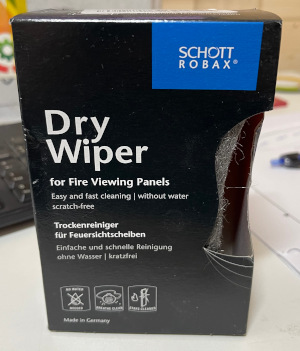Frequently Asked Questions about our Pellet Fed Wood Burning Stoves
Have a question? We’ve put together a list of the most commonly asked questions about our Wood Burning Stoves here to help.
Is your question not listed below? Feel free to contact us and we’ll be happy to get back to you as soon as possible.
Wood pellet stoves burn compressed wood pellets to create a source of heat for residential spaces.They are fully automatic and operate under timer control to feed the fuel, ignite the pellets and control the air flow and temperatures to maintain the heating and hot water for your house.
Wood pellets are a renewable fuel made from virgin forestry residues (the parts of the tree that are too small to make timber products). To create wood pellets the bark is removed and the clean timber is chipped and dried to less than 10 percent moisture before being compressed in to small cylinder-shaped pellets of wood around 6mm diameter and 25mm long. There are no additives as the natural lignin in the wood provides the binding of the fibres to make a dense and consistent product.
Wood pellets contain no bark and therefore when they are efficiently burnt in an automatic pellet stove very little ash is produced – this means maintenance for chores such as ash removal is far less than a traditional log stove. Between each time you use our wood pellet stove all you need is the pull of a lever to remove ash from the grate before starting a new fire. Starting the fire is automatic so it is just a press of a button. It’s that simple! There is far less effort – no more crouching down to light the fire, no more regular ash emptying and no more getting up to refuel.
A 10 Kg bag of pellets will typically last between 1 and 3 days depending on whether your stove is running all day or just for a few hours per evening. Unlike log stoves, you certainly don’t have to get up and down during the course of an evening to refuel your stove. Wood pellets are filled into the hopper by pouring in through the open lid at the top of the stove. Pellets are fed from the hopper into the fire with a small screw auger so there is no need to open the stove door while the stove is alight.
Most imported European pellet stoves are designed for large open planned rooms with bottom exit flue, these are too tall to fit in a fireplace and do not have a flue that suits a chimney. The Lundy stove range is 650mm high and 620mm wide, so they fit into a standard fireplace opening. The flue exits the top just like a log stove so can be fitted to chimney flues. The Lundy stove does not have to be in a fireplace so it can also be free standing in a room.
Many pellet stoves use electrical fans to blow warm air into the room and yes these fans can be noisy. This is not what we wanted while relaxing in front of a fire so we spent much effort developing our Lundy stoves without convection fans. Novel heat exchanger designs and natural convection currents produce warm air in the room without noisy stoves. With the Lundy you’ll hear pellets softly ‘tinkle’ as they drop into the grate – other than that, operation is very quiet.
Pellets for use in a stove are best purchased in 10kg or 15kg bags. The bags are recyclable plastic bags which keep the pellets dry, however, to ensure that your wood pellets are kept in good burning condition, we suggest you store them in a cool and dry place like a garage or garden shed. Pellets are very dry so must be kept away from water and dampness as they will swell up and degrade if they get wet. Once the pellets are brought into the house you can store pellets in our pellet scuttle which allows storing and pouring into the hopper.
Log stoves are not suitable for passive houses as they are not fully sealed (you have to open the door to fill with logs and even if the main air is drawn from outside the stove is not sealed from the room). The other problem is that a passive house needs very little heat by its design and so a log stove is not controllable and will often overheat a property. However, the Lundy stove is built for a passive house; it is fully sealed when used with a concentric flue, it is thermostatically controlled and automatically modulates to very low outputs. We have developed passive house designs with our stoves so look out for our other publications on this subject.
A pellet stove is usually considered a room heater that heats air, however, a pellet stove with a boiler can provide both radiative heating to a room and also heat hot water. A pellet stove boiler which heats water can be installed to heat radiators and/or hot water cylinders. Our Lundy stove has been installed in many homes to provide the main heating and hot water system, this is achieved with our Lundy 8 boiler version which is connected to three or four radiators and a hot water tank.
Yes, we have the option of the balanced flue that can be installed horizontally through a wall without having to exit through the roof.
Our Lundy 5 and Lundy 8 pellet-fed wood burning stoves produce far fewer emissions than a traditional wood burning stove and are less harmful to the environment which results in a greener alternative to wood burning stoves/ovens. As an added bonus, our pellet fed wood burning stoves are designed with UK homes in mind, and won’t look out of place in your home – no better direct placement for your standard wood burning stove and log burner. Our stoves are designed to sit into a traditional fireplace arch the same way a traditional log stove does, rather than as a free standing cabinet design that other pellet stoves might use.
Our stoves are already Ecodesign compliant (and have been for a while now!) they are also CO2 neutral, meaning they are an environmentally friendly method of heating your home. Our Wood Burning Pellet Stoves are also Defra approved and HETAS approved to the highest degree.
HETAS support cleaner and safer choices for the use of biomass and other solid fuels, appliances and associated technologies. HETAS keeps a register of properly trained installers, suppliers and manufacturers of biomass stoves as well as stoves fueled by other sources, to ensure safety, quality and environmental standards for wood burning stoves. All of our stoves are HETAS approved.
Wood pellet stoves can be cost-effective in the long run. While the initial purchase and installation costs may be higher than other heating options, wood pellets are often more affordable than fossil fuels in the long term. Additionally, the efficient combustion of wood pellets can result in lower heating bills.
To determine the appropriate size of a wood pellet stove, you should consider the square footage of the area you want to heat. Factors such as insulation, ceiling height, and climate can also influence the stove’s sizing. Consulting with a professional or using an online sizing calculator can help you select the right stove for your needs.
Wood pellet stoves generally require regular maintenance to ensure optimal performance. This includes cleaning the burn pot and ash pan, checking and cleaning the exhaust system, and inspecting the fans and motors. It is also important to have the stove professionally serviced annually to address any potential issues and ensure safe operation.

No, our stoves are designed to use 6mm diameter pellets made to the EN Plus A1 quality standard. This fuel is readily available from domestic producers that belong to the UK Pellet Council. These pellets have consistent size, density, and moisture content, which promotes efficient and clean burning. Using low-quality or improper fuel can lead to poor performance, increased maintenance needs, and potential damage to the stove.
From a member of the UK Pellet Council, which is the trade association for UK producers of pellets made to the EN Plus quality standard. See link below for details:
Wood pellet stoves can be suitable for various homes, but certain factors should be considered. Adequate ventilation and a proper flue system are necessary for safe operation. Additionally, accessibility to a reliable source of wood pellets and space for pellet storage should be taken into account. Consulting with a professional can help determine if a wood pellet stove is suitable for your specific home.
Depending on your location, wood pellet stoves may be eligible for government incentives or grants aimed at promoting renewable energy and reducing carbon emissions. It is recommended to check with local authorities or energy agencies to determine if any incentives or grants are available in your area.
Thank you for your interest. At this time we install our products anywhere in England or Wales.
